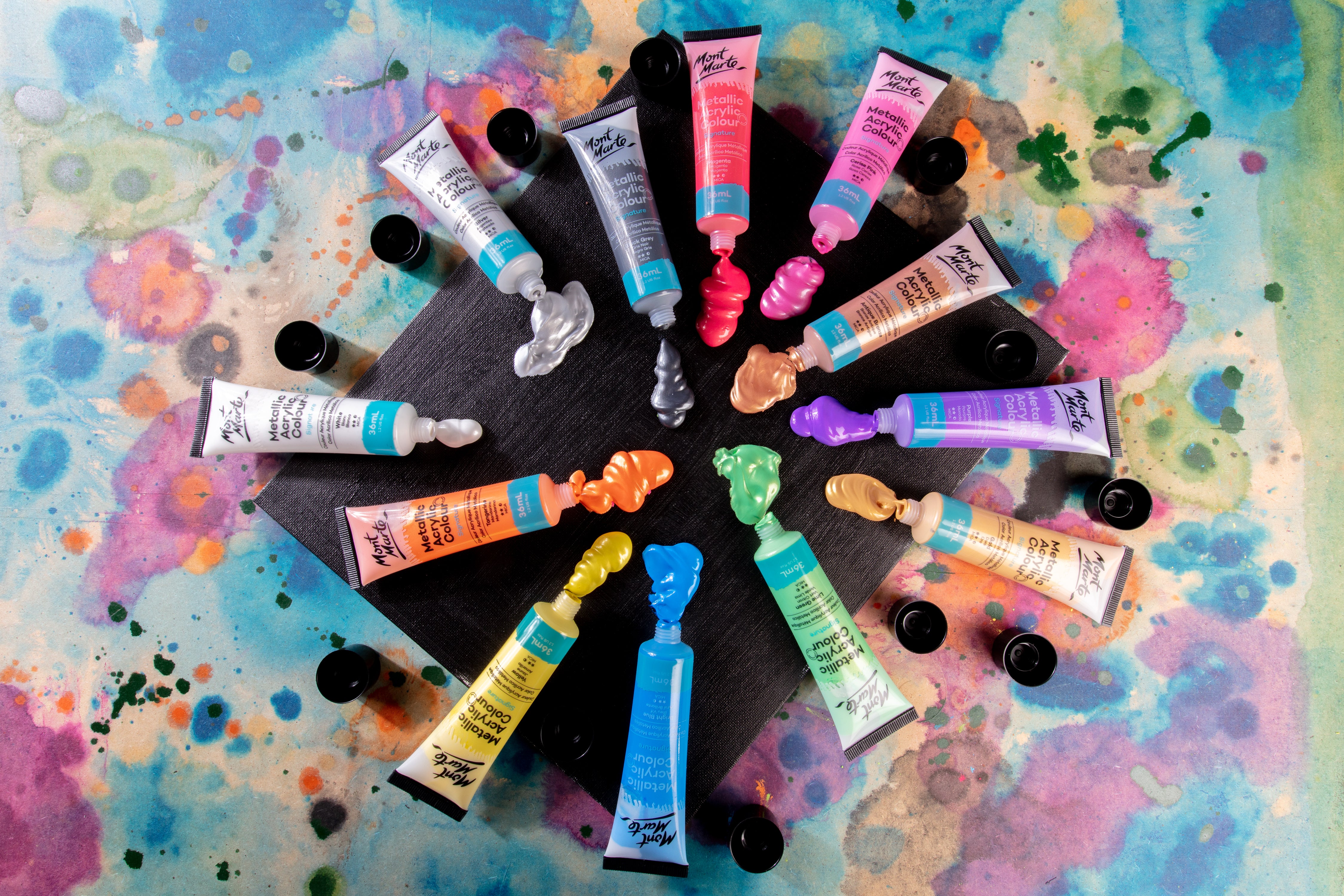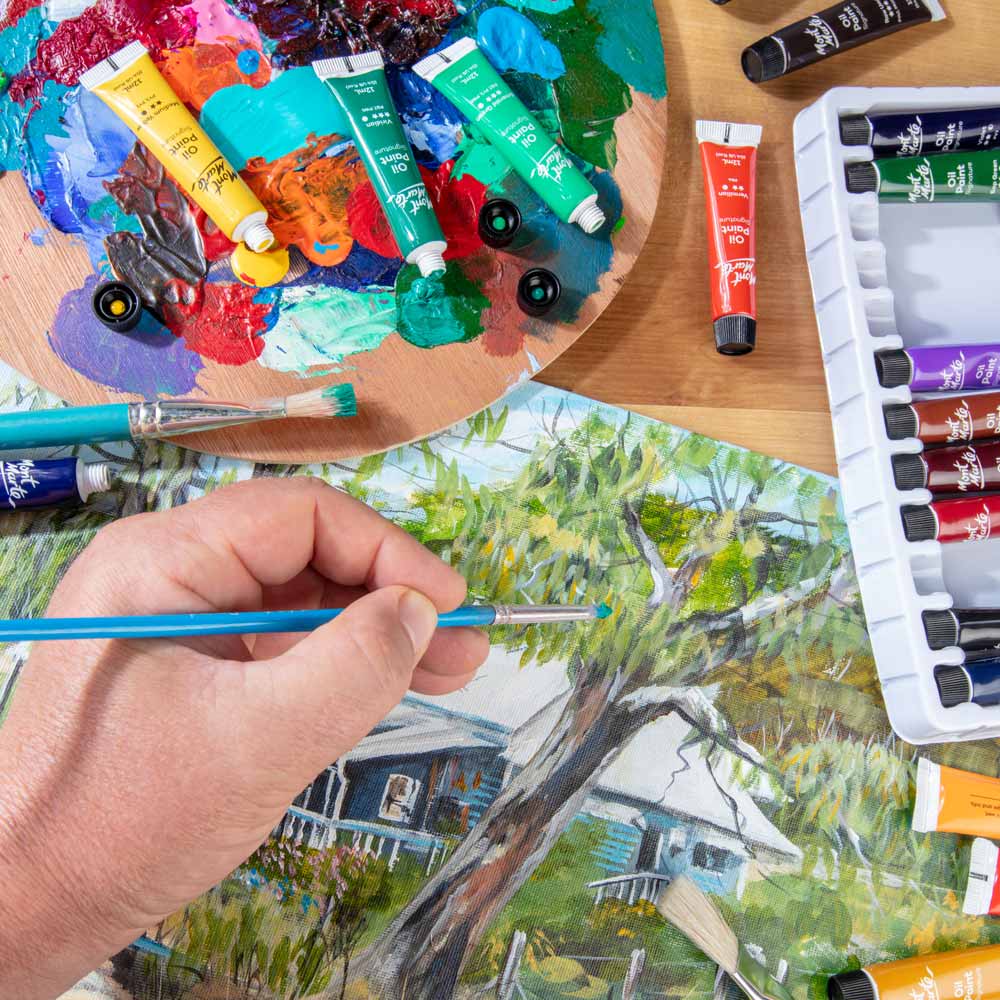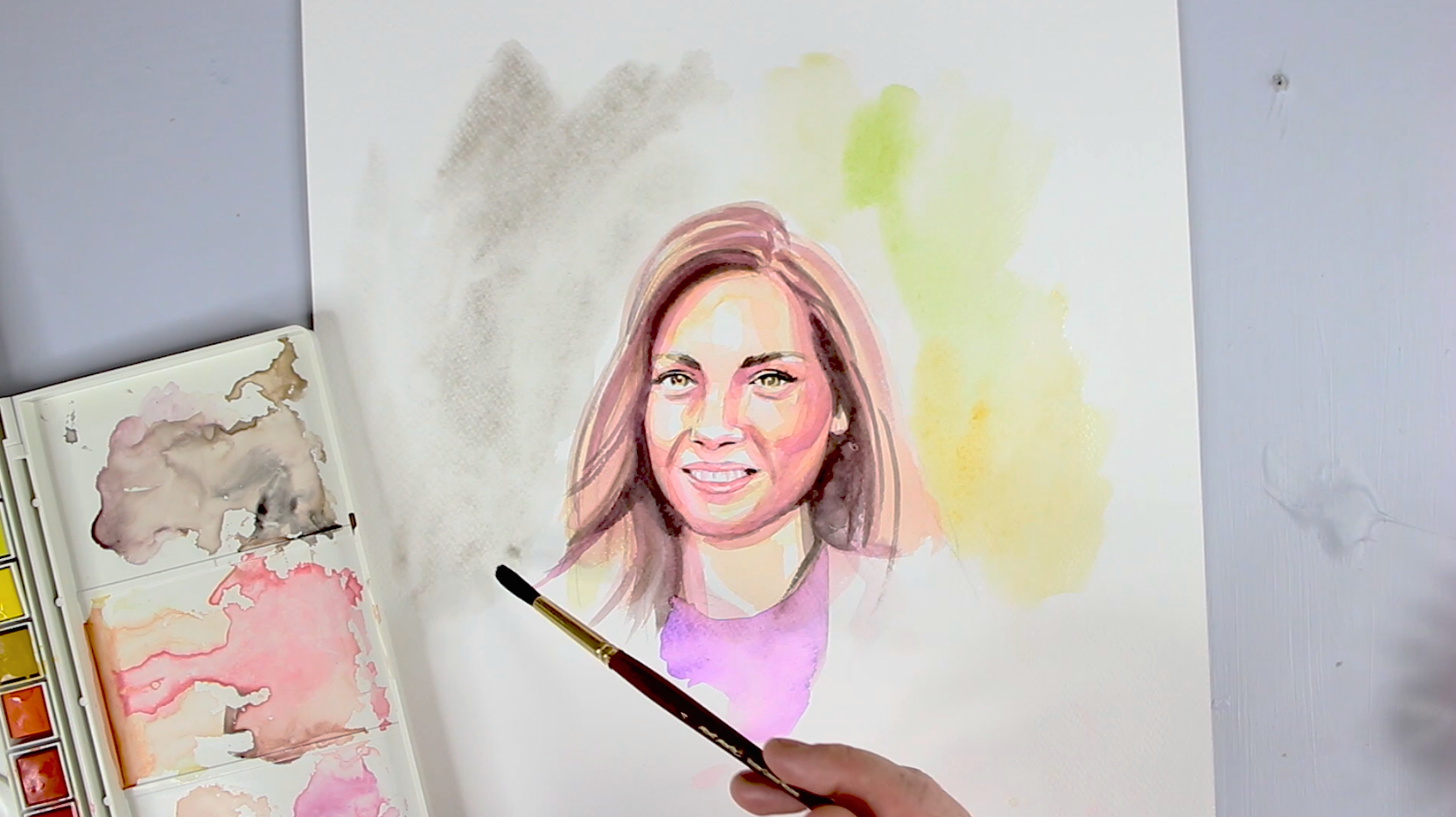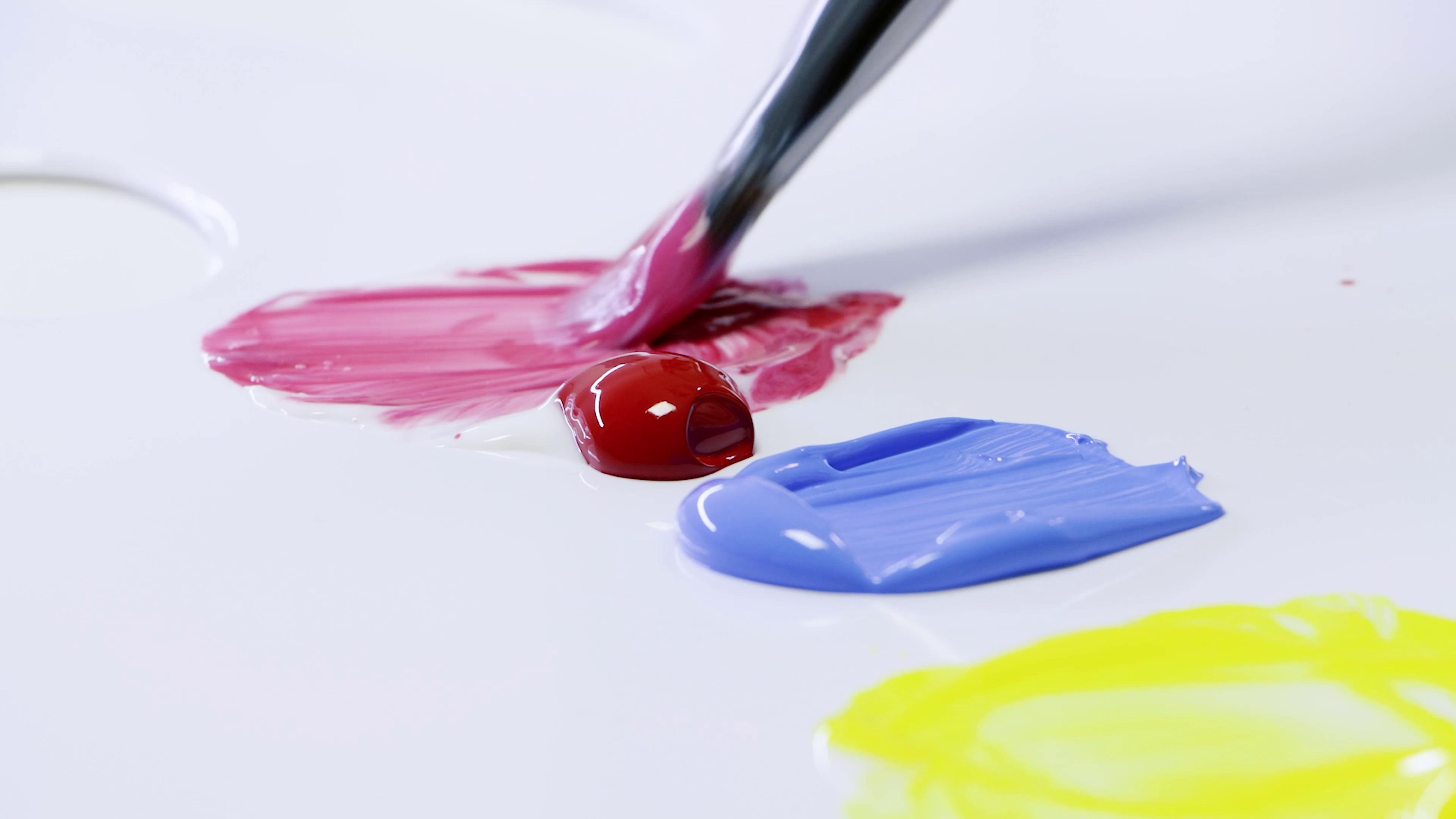Let’s be honest – there are loads of art paint types and sometimes that can feel a little daunting! We’re here to shatter the barrier between you and creating so you can feel confident next time you pick up some paints. Our team has answered a bunch of commonly asked questions below but if you think of any more, reach out to us on socials or email to ask us! We’re always here to help you create.
1. So what are the different painting mediums?

We try to make sure we have art paints to suit every project. Most paints are water-based other than oil paints, which are (unsurprisingly) oil-based! Our oil paints come in tubes and sets, as well as water mixable options.
When it comes to water-based paints, you can choose between acrylic paints and ink, watercolour, gouache, and drawing ink. These create a wide range of effects, clean up easily with soap and water, and play well with other water-based mediums. Our acrylic paints also come thinned and prepared for pouring so you can explore fluid art!
You can also play with poster paints – great for kids to discover painting – and chalkboard paints, to prepare surfaces for chalk.
2. What’s the difference between gouache and watercolour?

Ahhh, this old chestnut! These paints are pretty similar and often get confused. Both can be thinned and diluted with water and they actually mix well together. So how are they different?
For starters, watercolours give you that soft, transparent effect, perfect for creating lightweight, flowing artwork. It’s generally never opaque and layers well to create glazes for depth. Gouache, on the other hand, is all about bold, opaque colours that dry to a matte finish, making it a favourite for illustrators and those who love vivid, solid tones. It can be thinned for a more translucent effect, but typically is sought after for its punchy, matte colouring!
3. Can you mix acrylic and oil paint?

While it's not typically recommended to mix them directly due to their different properties, you can use acrylics as a base and layer oils on top once the acrylic layer is fully dry. This allows you to enjoy the best of both worlds!
So you know what to expect when handling each medium, here’s some quick facts!
- Oil paints are richer in colour than acrylics and have a slight sheen to them
- Acrylic paints dry quickly, while oil paints take longer
- Acrylic paint is flexible and waterproof once dry while oil is hard and more brittle
- With oil paints, you’ll need to work with chemical solvents and work in a well-ventilated area
- Use either a hog bristle, sable, or taklon brush with oils
- Acrylic paints can be used with most brushes
We explore painting with oils and acrylics in our Mandarin Duck Project and dive into more differences between the mediums in our Oils vs Acrylics Guide.
4. What different paint mediums do I use to change flow?

- Acrylic Paint: Simply use water or an acrylic medium to achieve your desired consistency! Our Acrylic Flow Medium and Acrylic Pouring Medium are great for thinning your paint, while Impasto and Modelling Paste work well for thickening.
- Watercolour & Gouache: Thin with water – easy peasy!
- Oil Paint: You'll need turpentine, mineral spirits, or an oil medium to thin it out. In terms of mediums, our Linseed and Safflower Oils will help thin and improve the flow of your paints, while our Amber Gel increases transparency without effecting consistency.
Learn more about art mediums by checking out our medium how-tos, guides, and FAQs!
5. What artistic surfaces can I use for each paint type?

Each paint type usually has a few surfaces you can create on, but we’re here to recommend the ones that will give you the best results! Having said that, feel free to experiment at home to see which surfaces are your fave.
- Acrylic Paint: This medium has loads of applications. Get creative and paint on canvas, wood, air-dried clay, plaster, paper, cardboard, leather, some plastics, and more!
- Watercolour Paint: We recommend sticking to watercolour paper or mixed media paper for the best results. You can try using watercolours on canvas but the colour payoff may not be as striking as the fibres are not as absorbent as paper.
- Oil Paint: For bigger projects, canvas and wood boards work a treat. For smaller pieces, we have a handy Oil and Acrylic Pad so you can create on the go with paper.
- Gouache Paint: We recommend using watercolour paper, mixed media paper, wood boards, or our Oil and Acrylic Pad – it’s a pretty flexible medium!
6. What type of painting is easiest for beginners?

This is entirely subjective, as each person’s experience with painting is different. There’s no one right answer BUT acrylic paints are a popular starter medium. Acrylics are opaque, vibrant, easy to use, dry quickly, can be mixed with water, and work well with lots of other mediums. Plus, they are very forgiving if you make a mistake – just speed-dry the area with a hairdryer and paint over the top!
We’d recommend acrylics for any beginners looking to splash some colour around – just remember to have fun and embrace your own style!
7. How to clean paint brushes for different mediums?

Before we dive into the different paint types we have an important tip – always lay your brushes flat when drying so water doesn’t pool in the ferrule. Once dry, you can store them upright but not while wet as it may cause damage! You can also reshape your brush bristles with some conditioner after washing so they stay pointed – just remember to rinse before the next use.
- Acrylic Paint: A quick rinse with warm water and soap will do the trick. It may help to use a ridged surface to get between the bristles, like the base of our Collapsible Brush Washer. Check out how we care for acrylic brushes in our how-to video.
- Watercolour Paint: Just rinse them thoroughly with water and leave to dry – easy cleanup!
- Oil Paint: You’ll need a bit of turpentine or mineral spirits, followed by a good scrub with soap and water. Decant the solvent into three containers, removing paint little by little and swapping to the next container when the solvent gets too discoloured. As solvent strips oil, we recommend re-oiling the bristles with an oil medium and then conditioning them with standard conditioner. This will help keep the brush in shape as it dries! See this process in action in our handy how-to video.
- Gouache Paint: Simply clean with warm water and soap – no need to overcomplicate things!
8. What are the different paint drying times?

- Acrylic Paint: Fast-drying – usually touch dry within 30min-1hr and completely dry within 24hrs depending on paint thickness.
- Watercolour Paint: Quick-drying, often within minutes! You can use a hair dryer to speed up drying time for water-based paints (e.g., acrylics, watercolours, gouache, etc.).
- Oil Paint: Slow and steady wins the race! These rich and full-bodied paints can take days to weeks to fully dry. However, they’re typically touch dry after about 18-24 hours depending on the colour formula and how thick they’re applied. You can take advantage of the slow drying time to carefully blend and layer your colours while wet.
- Gouache Paint: Dries quickly just like watercolour – usually within a few minutes to an hour.
9. How to slow acrylic drying time?

Acrylics are known (and often loved) for their speedy drying time. But there’s a catch! Fast drying means less time to blend and finesse colour layering. If you’re a fan of oils and want to slow things down a bit, mix your colours with an Acrylic Retarder. We recommend approximately 1 part retarder to 4 parts paint but test-patch to see how your paint reacts before committing to the final work.
You can also keep a water spray bottle handy to mist your palette so it stays fresh for longer, giving you more time to finesse your masterpiece!
10. Are there different painting techniques for each medium?

Absolutely! Each paint type has its own bag of tricks. What’s your go-to technique?
- Acrylic Paint: Try your hand at dry brushing, glazing, or add in some Impasto for dimensional texture. You can also thin with Pouring Medium or play with Pouring Acrylic Paints to explore fluid art.
- Watercolour Paint: Experiment with wet-on-wet, wet-on-dry, or layering techniques for added depth. Combine with ink for traditional illustrations and calligraphy!
- Oil Paint: Pay homage to traditional painters like Monet, Van Gogh, Rembrandt, Klimt, and Da Vinci with rich colours packed with depth. Blend, glaze, or scumble to add dimension to your artwork.
- Gouache Paint: Dive into matte layering, dry brushing, or even mix with watercolours for a whole new world of possibilities! The flat, opaque colours are great for stylised illustrations and modern designs.
For more technique suggestions, check out our Tips & Techniques blogs, where we’ve got a feature on just about every medium we sell!
Now you know all about the different artist paints and their features, we hope you feel ready to create! If you do make something, snap a pic and #montmarteart or tag us @montmarteart on Instagram or Facebook. We’re excited to see what you come up with!
For more ideas, explore our Projects and How-tos. If you’re looking for answers to more art questions, jump into our FAQs collection.
Stay up to date with the latest Mont Marte news, info, products, projects, and more by subscribing to Creative Connection down below. Simply enter your email to get loads of free art lessons and inspo sent straight to your inbox.





























